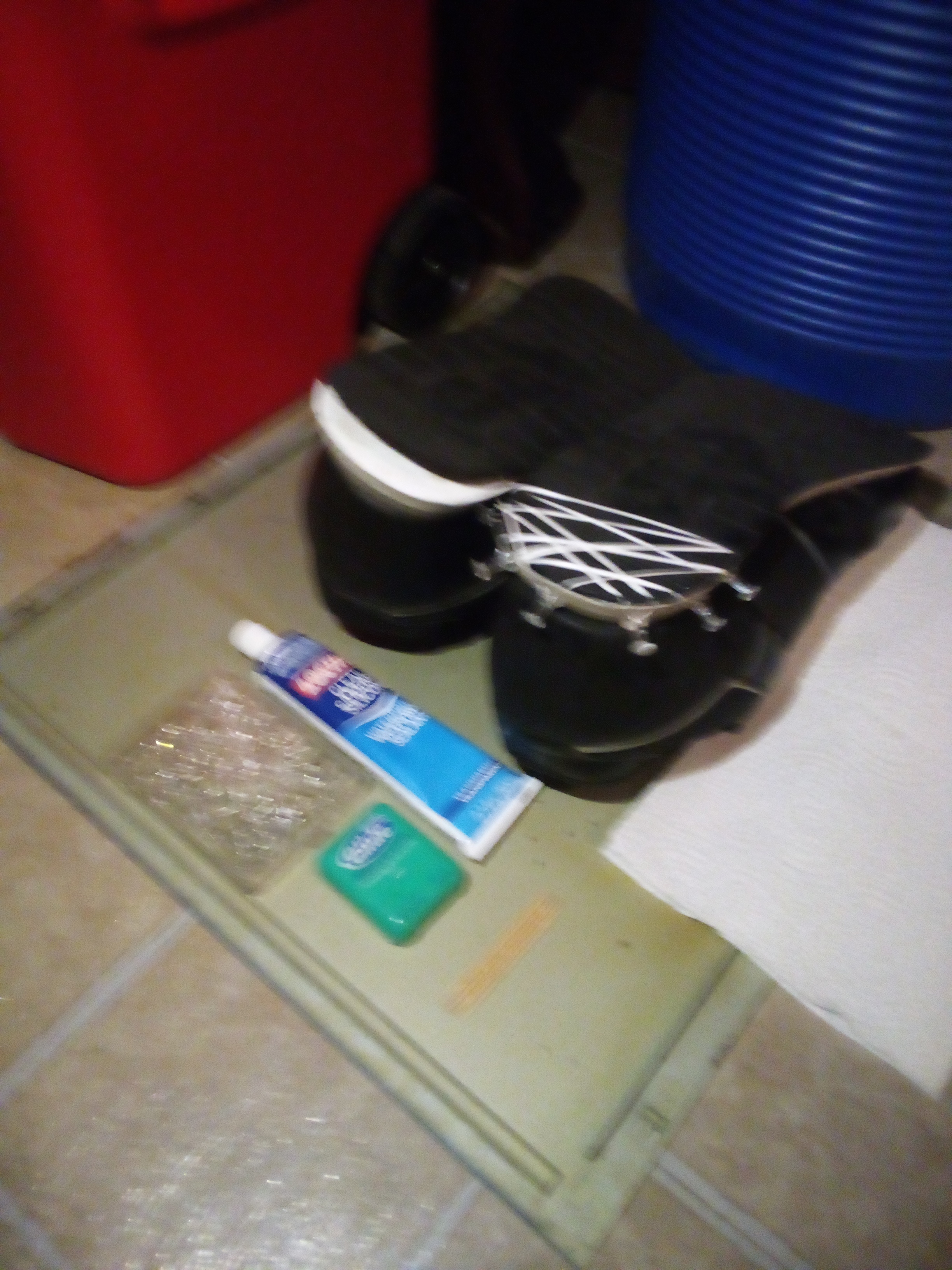Very clever! If I were confronted with the same task, I would have filled it with a hot pad bean bag then put something heavy on top.
Life Pro Tips
Unlocking the Secrets to Success and Fulfillment!
Rules
- Share valuable life pro tips.
- Keep it concise and clear.
- Stay on-topic.
- Respect fellow members.
- No self-promotion.
- Verify information before sharing.
- Avoid illegal or unethical advice.
- Report rule violations.
Join us and share your best life pro tips!
My first instinct was to put something heavy on top as well, but the heel has a slight curve to it. So like how do I keep a pressure on a curved surface?
Then the answer became clear to me, just tack into the original curve of the shoe! It's only there temporarily anyways.
I just hope I used an appropriate glue for the purpose. I know many might suggest Gorilla Glue, but I went with generic silicone glue.
Fingers crossed on the glue, but I think I got a pretty solid method to keep pressure applied while it dries..
There is a glue that is stinky and not advertised much: e6000. I use it for misc projects like this. Yup your method works..
Also I have a mild grammar pet peeve: a chemical reaction that makes a liquid become a solid is not "drying" but is rather called "curing". If you got your glue wet and it reverted to a liquid, then it would only be " drying".
If glue was strictly a chemical reaction, then it would cure itself in the tube on a warehouse shelf before you even purchased or opened the glue. But nope, it takes exposure to air before glue actually dries.
Sounds like you're thinking of epoxy, which is distinctly different than glue and comes as two separate chemicals meant to be mixed just before use and actually can cure without exposure to air.
Edit: Silicone glue breaks down and becomes a liquid again with solvents such as acetone. Same with E6000 (which I've also used before). Water isn't the only liquid substance that makes things wet ya know..
Well, I just checked Wikipedia and we are both right:
" Even if it is strongly associated with the production of thermosetting polymers, the term "curing" can be used for all the processes where a solid product is obtained from a liquid solution,"
Glue that reacts with oxygen in the air is a process that produces a solid from a liquid.
Epoxy is a really long hydrocarbon chain.
There is no mention of curing and solvents. I normally think of drying as water leaving because no chemical reaction occured, and the original substance properties return with water added.
Shrug, I learned that it shouldn't be a pet peeve.
I use that same silicone stuff all the time to make repairs and non-permanent attachments of things to other things. I'm guessing it will work OK for this, but over time it might peel apart as shoes flex and move a lot. The silicone is flexible, as you said, but the adhesion may weaken with constant movement.
They make some stuff for this exact purpose called Shoe Goo... that may or may not work better. I've used it for off-label purposes like reinforcing the thin plastic shells of RC cars. It dries much harder but is still semi-flexible. It adheres strongly and won't peel off without a lot of force and a scraper tool. (Silicone can peel off using just your fingers).
Good luck, it might work out.
I've actually tried Shoe Goo before years ago, but it didn't last very long for me. So this time I'm trying a different glue and different process..
